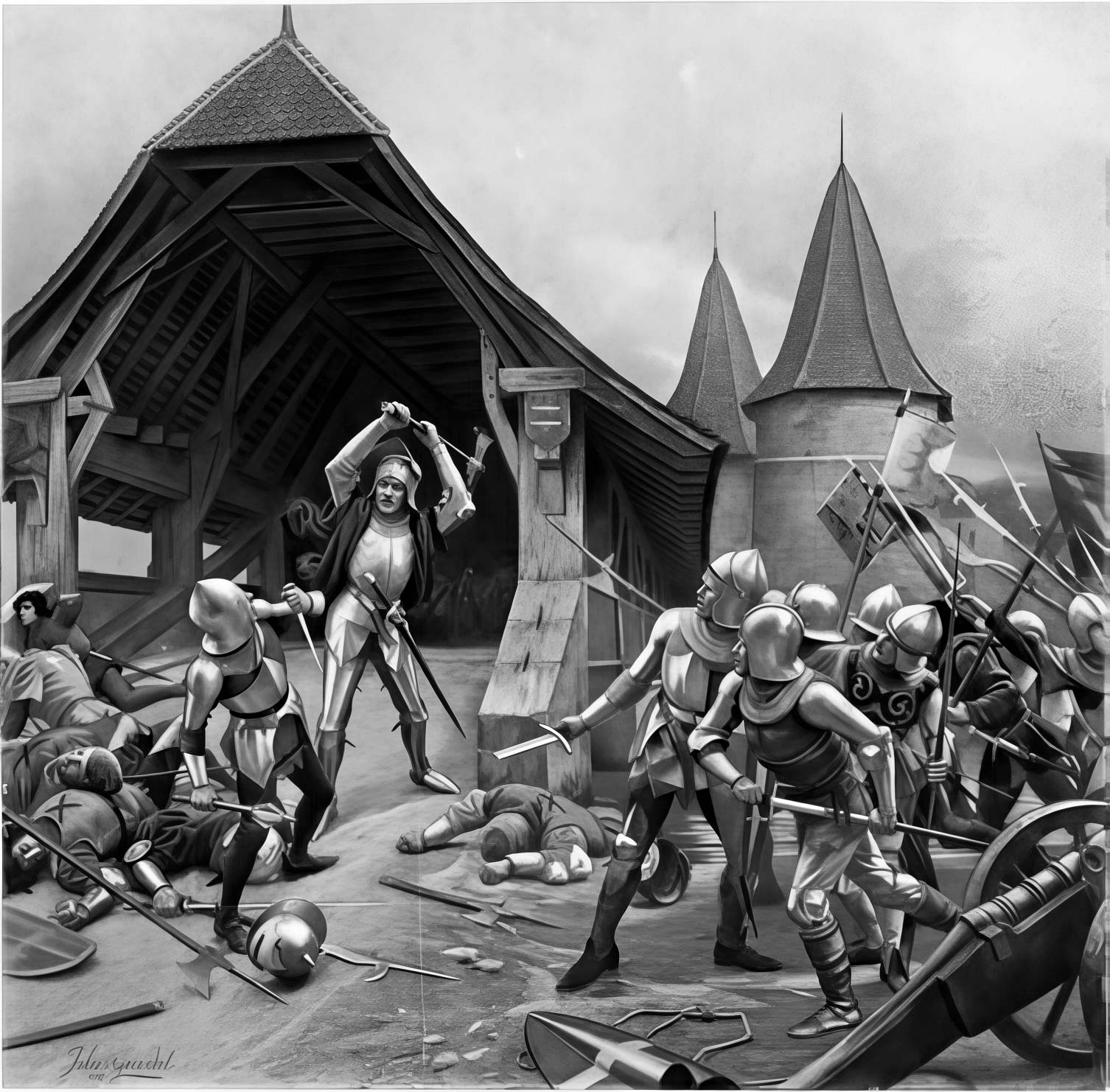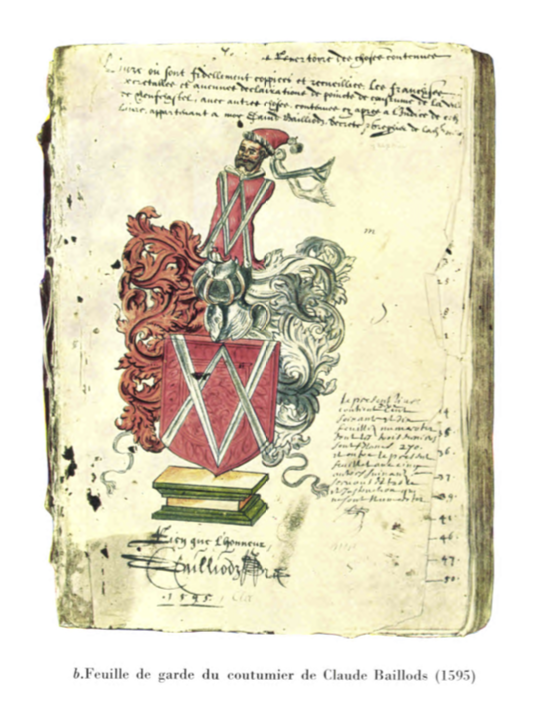

Translated to English by Brad Baillod from the website of C.F. Baillod

Jacques Baillodz is the common ancestor of all the Baillod family, a legendary figure, he is the trunkof our genealogical tree. He gained fame through exemplary courage at the Bridge of Thielle in 1476.
Here is the account of his military feats:“In March 1476, after his defeat by Grandson, the Duke of Bourgogne, Charles the Daring [Charlesis the Duke], reassembled a new, a great army, entered Switzerland through Orbe, marched on Morat,Bern and Fribourg. He gave command of his army to the Count of Romont who traveled with theadvance guard and stopped at Estavayer, where he began to wage war against the Swiss. After havingreassembled all his soldiers, he advanced by Cudrefin across the swamp, and by the valley of the Broie.He took the village of Anet by surprise. At the first signal from the sentinels which the Confederateshad placed as guards, the villagers of both sexes appeared full of vigor, fortified with all types of arms.The people of Neuveville and of Neuchatel came running to help their neighbors.”
“Already a considerable number of Savoyards had gone to make their passage over the defenselessBridge of Thielle, when Jacques Baillod, banneret* of Neuchatel, a very tall man, rushed alone towardthe enemy. Armed for war, equipped with a battleaxe and protected by his shield, he threw himselfon the enemy crying: “For the children of the canton!” Jacques Baillod victoriously defended theBridge of Thielle against the Count of Romont, his battleaxe spreading terror in the ranks of theSavoyards and giving death to all it reached. After long resistance and superhuman efforts, our hero,like Horatius Cocles did on the Bridge of Sublicius at Rome, put to flight that mob of warriors who,all well armed, had rushed like madmen at this courageous Neuchatelois.
On seeing this, the Count ofRomont, a part of whose company had just attempted a large check at Anet, where the women werefighting heroically, turned on his heel, too weak, he said, to resist such men; he rejoined the main partof the army of the Duke of Bourgogne and went to be cut to pieces before Morat.”
* Banneret is an English word meaning “formerly, a magisterial officer of the second rank in some Swiss cantons,” anurbanization of an earlier term referring to a knight of the second rank who rode in battle with a square flag.
Historically, there have probably been less than 5000 people that ever had the name Baillod. Familynames first came into use in Switzerland around 1100, and according to the Armoreal Neuchatelois,the earliest references to the Baillod name occur in the 1300s at Travers in Neuchatel, so Travers isprobably where the name actually originated.Accurate genealogies for both the Baillod and Baillods families have been constructed back to about1600, with anecdotal and folklore data extending back to about 1400. Both families claim to descendfrom the legendary Jacques Baillod (or Baillodz, depending on which family you belong to), whowas knighted for single-handedly defeating the army of Jacques de Savoie, the Count of Romont(1440-1486) at the Bridge of Thielle in 1476. Baillod was knighted for this deed and received a medalwith the Latin inscription “Vires agminis unus habet,” which translates as “One has the strength ofan army.”
Neuchatel didn’t join the Swiss Confederation until 1815 and was an independent state prior to thattime. As such, most Baillods in the 19th century would have considered themselves “Neuchatelois”rather than Swiss or French. The area of Neuchatel where the Baillod family originated is known as“La Beroche” and is known for its farming and for its watch & jewelry making. Many Baillod familymembers consequently, became watchmakers and some became quite famous for their fine timepieces.
There are a few variations of the name Baillod, which can be seen in Neuchatel historical documentsand directories, including Baillod, Baillot (archaic), Baillods and Baillodz (archaic). Further researchinto these names reveals that there were actually two distinct groups of Baillod families. The Gorgierfamily used the spelling Baillod/Baillot, while another significant group, centered around Couvet,Bole and Motiers, used the spellings Baillods/Baillodz.Today, the Baillods family is much smaller than the Baillod family, but has an extensive genealogyshowing no historical overlap with the Baillod/Baillot family. Interestingly, the Baillod family historygiven in the Armoreal Neuchatelois appears to be based exclusively on the Baillods family and showssignificant overlap with the Baillods family genealogy, while no members of the larger Baillod familyof Gorgier are mentioned.It is probable that both the Baillod andBaillods families share a common origin,but it is not possible to trace throughknown records. The original meaning ofthe surname Baillod remains shroudedin mystery, but several possible linguisticorigins can be inferred from thisexplanation.
Claude Baillods was chief major of thearmy of the state and mayor in the Court ofJustice. The family moved from Travers toLe Locle in 1720. At the time of his deathin 1726 Claude was the chief justice ofTravers. After his death, his wife moved toNeuchatel where she survived him by 25years, dying there in 1751. Jeanne Madeleinemoved from Le Locle to Neuchatel after herhusband’s death in 1726.
